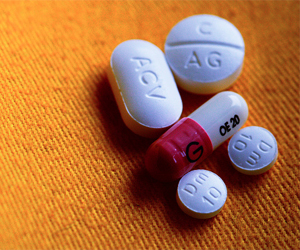 Think of the last pharmaceutical commercial you saw. It probably involved scenes of nature: people doing normal things like sitting in bathtubs on a hilltop and walking on the beach. But what was the name of the drug it was advertising? You can’t remember, can you? That’s because 99 percent of the pharma commercials created are exactly the same, and they all blend into a soft-focus, elevator-music-tinged, generic pile of boredom.
Think of the last pharmaceutical commercial you saw. It probably involved scenes of nature: people doing normal things like sitting in bathtubs on a hilltop and walking on the beach. But what was the name of the drug it was advertising? You can’t remember, can you? That’s because 99 percent of the pharma commercials created are exactly the same, and they all blend into a soft-focus, elevator-music-tinged, generic pile of boredom.
This unending cycle of mediocrity can be prevented. I’ll take a look at a typical pharma commercial and then give it a makeover, as well as give you tips for making sure your pharmaceutical brand stands out. You should, of course, consult your marketing agency before making these changes.
To make a standard pharmaceutical commercial, you need the following:
- A bland voice-over
- Scenes of nature (preferably in a field or on a beach)
- People smiling
- Lots of legal copy
- A list of side effects that’ll make you question why anyone would take the drug in the first place
- Snore-inducing music
- A meaningless tagline
Combine all these together in a blender, ad some art direction and you have a typical drug commercial. To illustrate, I’ve created this commercial, advertising the fake drug Dushenivan. (Clio nomination committee, take note.)
There are strict rules for how to advertise prescription drugs, especially on television. Advertisers have to list what the drug treats, its side effects and how to obtain it. But these requirements weigh down the commercial and leave very little room for crafting a story or creating a memorable experience for the viewer. After all, we all know that there’s a commercial for a sexual-performance drug that features a couple sitting in tubs outdoors, but what product’s being advertised? Cialis? Viagra? Something else? Then there’s the ad in which a woman rubs her knee after figure skating: Any idea what drug is being featured?
When it comes to taglines, all I can remember is that Nexium is the purple pill, which does little to inform me of what it does. Further, I couldn’t tell you what happens in a Nexium commercial—only that they announce that it’s the purple pill.
- Get the legal wording out of the way up front. Name the drug. Talk about what it does. List the side effects.
- Take the rest of the time to present a story or something memorable to the viewer.
- Finish off the commercial with the name of the drug and a distinct tagline.
- Avoid shots of nature at all costs.
Taking all those critera into account, I’ve created this new commercial for Dushenivan.
I may have gone a bit overboard with the pyrotechnics, and I shouldn’t have hired Michael Bay, but the message is there: Be different. Set yourself apart from the pack. Just because a brand is advertising in a heavily regulated space does not mean that it has to fall into the norm. Pharmaceutical advertising is still in its infancy, and it’s up to the innovators and thought leaders to define the future and not be complacent with the now. A pharma ad has to step out of the safety box. It has to shed the templates. It has to stand out among the ever-growing crowd of drug marketers. It has to rewrite the rules.
This is just my diagnosis, of course. How would you change pharmaceutical advertising?
(image)


